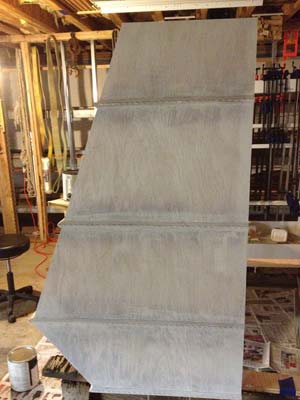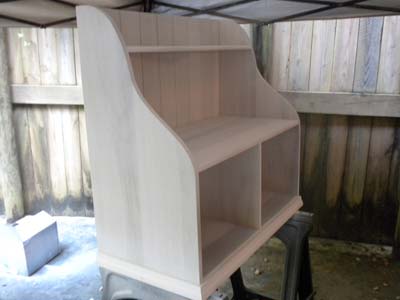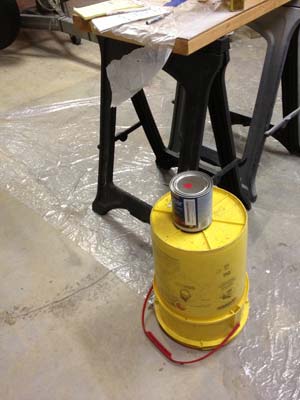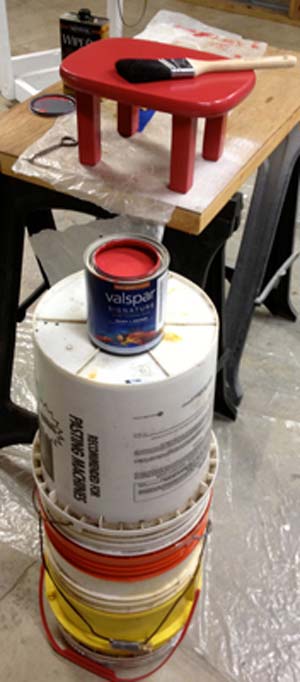Tips From Sticks-In-The-Mud Woodshop
by Jim Randolph
Long Beach, Mississippi
Welcome to "Tips From Sticks-In-The-Mud Woodshop". I am a hobbyist, not a professional, someone who loves woodworking, just like you do. I have found some better ways to accomplish tasks in the workshop and look forward to sharing those with you each month, as well as hearing your problem-solving ideas.
Tip #1
I love the natural beauty of wood, and therefore, I don't paint many of my projects. However, when I do I'm a huge fan of two coats of primer. The first coat is for those of us afraid of commitment. Because primer doesn't actually provide much "coverage," defects in the substrate you might have missed quickly become evident.

|
|
When I air-nailed this rope molding on, I thought I had all of the nail holes well-covered, but the first coat of primer made obvious the need for more work on some of them. That was a much easier fix at the primer stage than after a color coat.
|
Plus, primer goes on really fast, whether sprayed or brushed. These are benefits because finding a ding, a splinter, a rough surface, or other do-over at this stage means you can fix it now before you've invested time, energy, money and care in a color coat.

|
|
Time constraints required that I paint in a light mist this day. My handy canopy went up in 15 minutes, allowing me to spray the first primer coat. Primer showed me areas in the V-groove panels I'd cut that required more sanding.
|
Even if the defect requires you to sand through the primer, that's OK, because you're going to put another coat of primer on anyway. Adhesion for your subsequent color coat(s) will be excellent because of the strong foundation you've provided.
Tip #2
No Southern-fried Southern boy wants to be called a Yankee, but we share the characteristics of shrewdness and thrift. Thus, each month we include a money-saving tip. It's OK if you call me "cheap." Need an adjustable-height, portable table for a job, such as a stand for a paint can? Turn a five-gallon bucket over if you need the "stand" to be about 14".

|
|
Standard height of a 5-gallon bucket is about 14 inches. I have some smaller buckets and some 7.5 gallon buckets, too, for a variety of single-bucket heights.
|
If you need it higher, just add cans until you reach the necessary altitude.

|
|
This combination of six buckets provides a perfect height for the next coat of paint on this little stool project.
|
Jim Randolph is a veterinarian in Long Beach, Mississippi. His earlier careers as lawn mower, dairy farmer, automobile mechanic, microwave communications electronics instructor and journeyman carpenter all influence his approach to woodworking. His favorite projects are furniture built for his wife, Brenda, and for their children and grandchildren. His and Brenda’s home, nicknamed Sticks-In-The-Mud, is built on pilings (sticks) near the wetlands (mud) on a bayou off Jourdan River. His shop is in the lower level of their home. Questions and comments on woodworking may be sent to
DrRandolph@MyPetsDoctor.com
. Questions about pet care should be directed to his blog on pet care,
www.MyPetsDoctor.com
. We regret that, because of high volume, not all inquiries can be answered personally.
Return to
Wood News
front page


